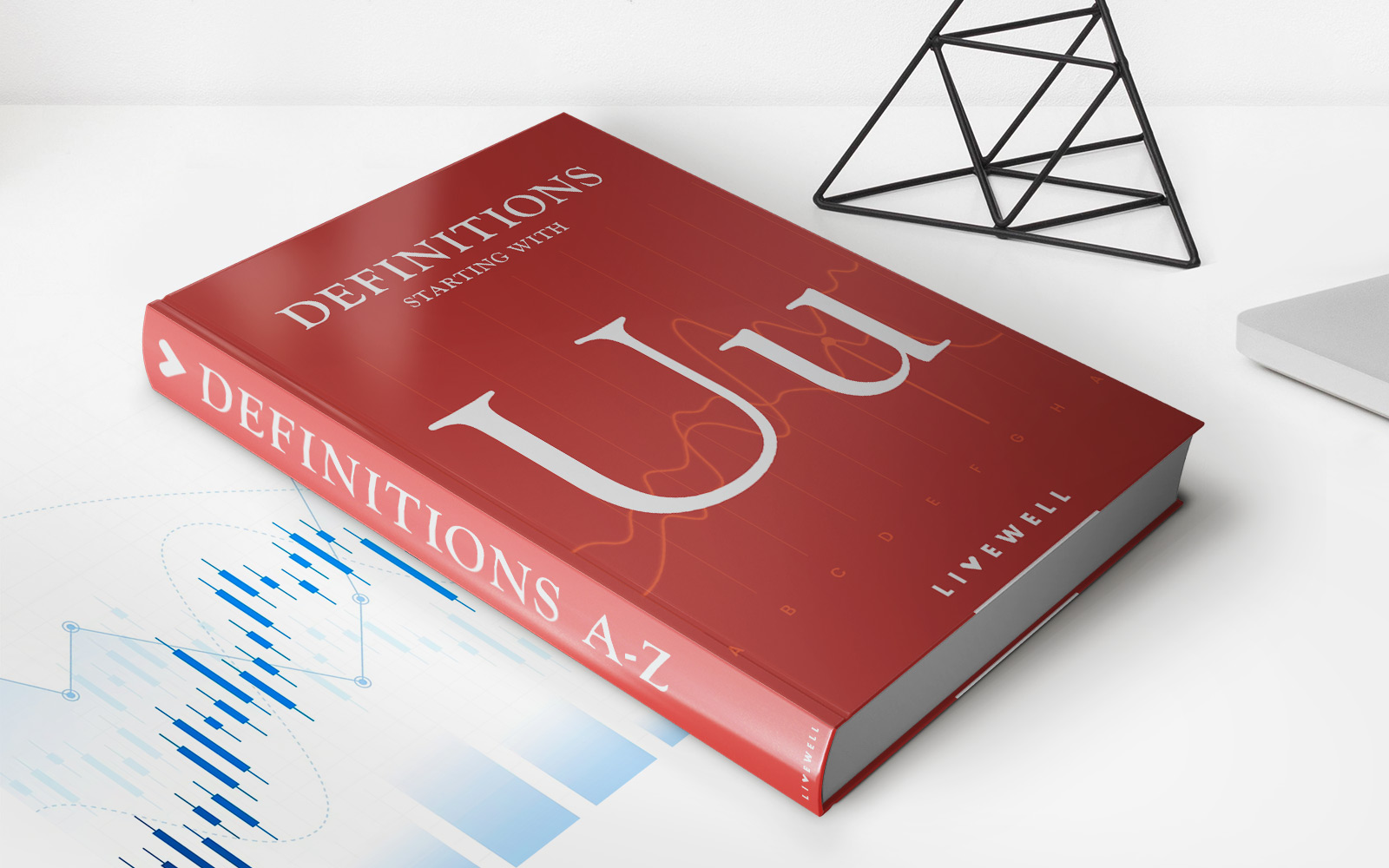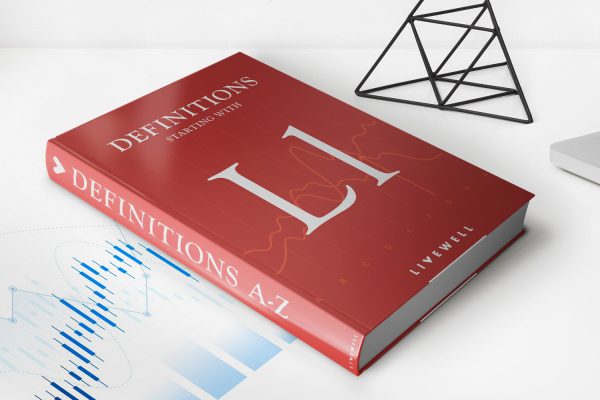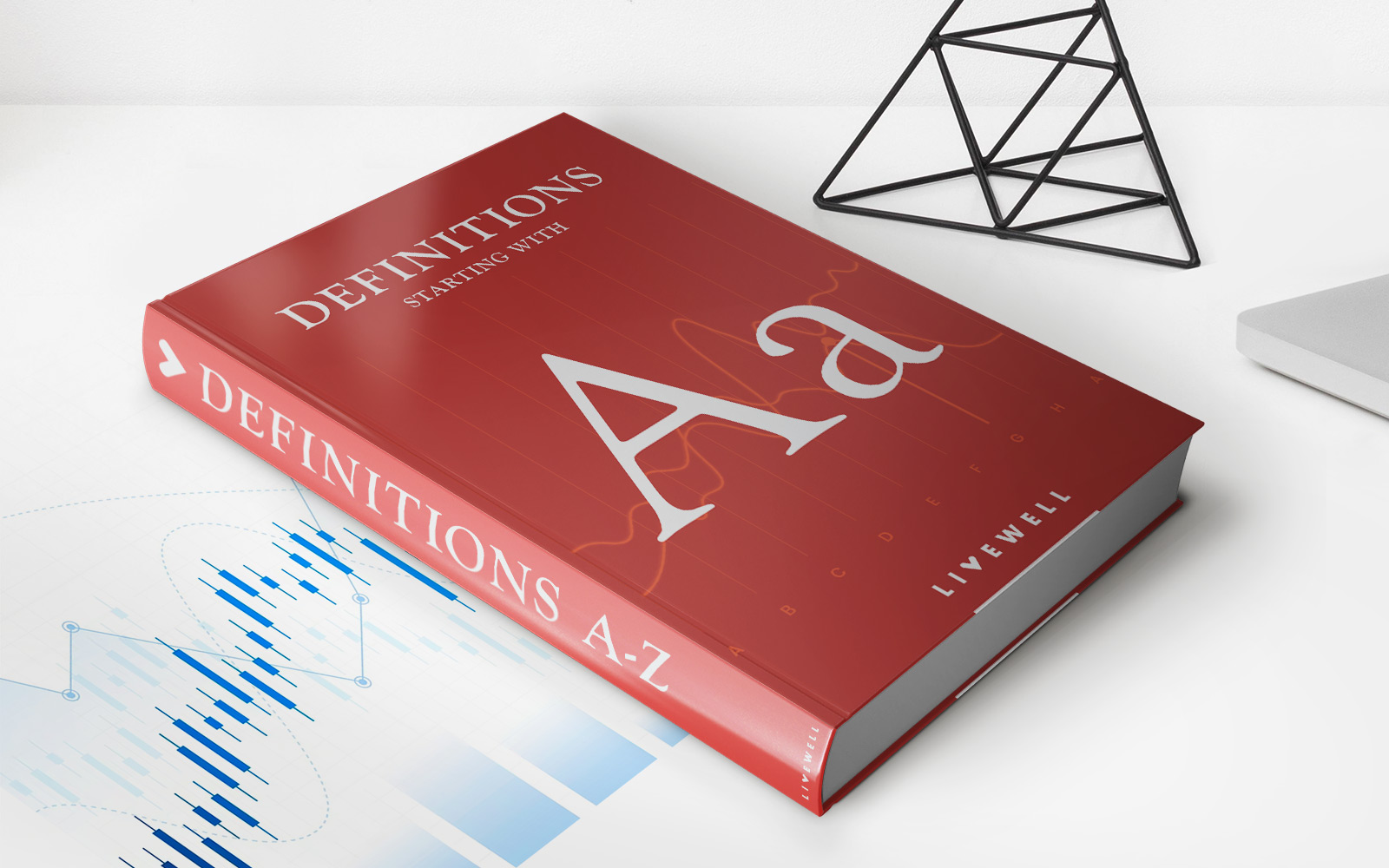

Finance
What Is AOR In Insurance?
Published: November 16, 2023
Learn all about AOR in insurance and its significance in the world of finance. Explore the concept and its implications for your insurance needs.
(Many of the links in this article redirect to a specific reviewed product. Your purchase of these products through affiliate links helps to generate commission for LiveWell, at no extra cost. Learn more)
Table of Contents
Introduction
When it comes to navigating the complex world of insurance, there are numerous terms and acronyms that can leave individuals feeling overwhelmed and confused. One such term is AOR, which stands for “Agency of Record.” Understanding the concept of AOR in insurance is vital for both insurance professionals and policyholders.
At its core, AOR refers to the insurance agency that holds the primary responsibility for servicing and managing a policyholder’s insurance needs. This agency acts as the main point of contact between the policyholder and the insurance company, handling tasks such as policy administration, claims management, and premium payments.
AOR is a crucial component of the insurance landscape as it establishes a direct and ongoing relationship between the policyholder and the insurance agency. This arrangement allows for streamlined communication, personalized service, and efficient management of insurance policies.
Understanding the role of AOR in insurance is essential for policyholders, as it determines who they will contact for any insurance-related inquiries or concerns. It is also important for insurance professionals, as it helps them understand their obligations and the scope of their responsibilities within the AOR framework.
In the following sections, we will delve deeper into the definition of AOR in insurance and explore its role, benefits, challenges, and real-world examples.
Definition of AOR in Insurance
In the realm of insurance, the term “Agency of Record” (AOR) refers to the designated insurance agency that has been authorized by a policyholder to handle their insurance needs on an ongoing basis. The AOR is responsible for managing and servicing the policy, acting as the primary point of contact between the policyholder and the insurance company.
When a policyholder designates an agency as their AOR, it means that agency has the authority to handle various tasks and transactions related to the insurance policy. This includes tasks such as issuing new policies, renewing existing policies, making changes to coverage, handling claims, and ensuring timely premium payments.
Choosing an AOR is an important decision for policyholders, as it directly impacts their insurance experience. The AOR serves as the policyholder’s advocate, guiding them through the intricacies of the insurance process and ensuring their needs are met as per the terms of the policy.
It’s worth noting that the designation of AOR is not permanent and can be changed if the policyholder decides to switch to a different agency. In such cases, the policyholder will need to notify the insurance company about the change and provide the details of the new AOR.
Furthermore, it is essential to distinguish between the AOR and the insurance company itself. While the AOR acts as the primary representative for the policyholder, the ultimate decision-making authority lies with the insurance company. The AOR serves as a conduit between the policyholder and the insurer, ensuring effective communication and efficient management of insurance policies.
By designating an AOR, policyholders can have a dedicated point of contact for all their insurance-related needs. This consolidation of services offers convenience and simplifies the insurance experience, allowing policyholders to focus on their core activities without worrying about the intricacies of insurance administration.
Role of AOR in Insurance
The Agency of Record (AOR) plays a pivotal role in the insurance landscape, acting as the primary liaison between policyholders and insurance companies. The AOR has several key responsibilities that contribute to a seamless and efficient insurance experience.
One of the primary roles of the AOR is policy administration. They are responsible for handling all aspects of the insurance policy, including issuing new policies, renewing existing policies, and making any necessary changes or endorsements. This ensures that policyholders have the appropriate coverage in place and that their policy remains up to date.
The AOR also serves as the main point of contact for policyholders when it comes to claims management. In the event of a covered loss or damage, the policyholder can turn to their AOR for guidance on the claims process. The AOR assists in filing the claim, gathering the necessary documentation, and communicating with the insurance company on behalf of the policyholder. This facilitates a smooth and timely claims resolution process.
Another important role of the AOR is premium management. They handle the collection of premium payments from policyholders and ensure that the payments are made to the insurance company in a timely manner. The AOR also assists policyholders with any premium-related inquiries or issues, such as billing discrepancies or payment options.
Additionally, the AOR provides vital support and guidance to policyholders throughout the insurance lifecycle. They serve as advisors, helping policyholders understand their coverage options, providing recommendations based on their unique needs, and assisting with any insurance-related questions or concerns.
The AOR also acts as an advocate for policyholders, representing their interests when dealing with the insurance company. They work to ensure that policyholders receive fair and prompt claims settlements, and they strive to resolve any disputes or issues that may arise during the policy term.
Overall, the role of the AOR in insurance is to provide policyholders with personalized and comprehensive service. They are the trusted partners who handle the administrative tasks, manage claims, and offer expert guidance, allowing policyholders to navigate the insurance landscape with confidence and peace of mind.
Benefits of AOR in Insurance
The Agency of Record (AOR) model in insurance offers various benefits for both policyholders and insurance professionals. Let’s explore some of the key advantages:
1. Streamlined Communication: Having an AOR ensures clear and efficient communication between the policyholder and the insurance company. Policyholders can rely on a single point of contact for all their insurance needs, minimizing confusion and ensuring prompt assistance.
2. Personalized Service: The AOR develops a deep understanding of the policyholder’s unique needs and preferences. This enables them to provide personalized advice, tailored coverage solutions, and a high level of customer service. Policyholders can expect a more tailored and attentive experience compared to dealing with multiple individuals within an insurance company.
3. Expert Guidance: AORs are knowledgeable professionals who possess a deep understanding of insurance products and industry regulations. They can guide policyholders through the complexities of insurance, explaining coverage options, recommending appropriate policies, and answering any insurance-related questions. This expertise ensures that policyholders make informed decisions about their insurance needs.
4. Efficient Policy Management: AORs oversee the entire life cycle of the insurance policy, from issuance to renewal and beyond. They handle administrative tasks, such as policy updates and endorsements, ensuring that policyholders have accurate and up-to-date coverage at all times. This level of efficiency and attention to detail minimizes the risk of gaps in coverage or incorrect policy terms.
5. Claims Assistance: In the unfortunate event of a claim, having an AOR provides policyholders with valuable support. The AOR assists in filing the claim, gathering and submitting the necessary documentation, and advocating for fair and prompt claims settlements. This assistance alleviates the stress and burden on policyholders and ensures a smoother claims process.
6. Risk Management: AORs proactively assess the risks faced by policyholders and recommend appropriate coverage to mitigate those risks. They keep policyholders informed about changes in insurance regulations, market trends, and emerging risks, allowing them to make informed decisions to protect their assets and interests.
7. Policyholder Advocacy: AORs act as advocates for policyholders, representing their interests and ensuring that they receive fair treatment from the insurance company. If disputes or issues arise, the AOR acts as a mediator, working towards a resolution that benefits the policyholder.
Overall, the AOR model in insurance offers numerous benefits, including personalized service, expert guidance, and efficient policy management. Policyholders can enjoy a more streamlined and customized insurance experience while having a dedicated professional to assist them throughout their insurance journey.
Challenges of AOR in Insurance
While the Agency of Record (AOR) model in insurance offers various benefits, there are also challenges that both policyholders and insurance professionals may encounter. Let’s explore some of these challenges:
1. Limited Options: Choosing an AOR means entrusting a single agency with managing all insurance needs. While this offers convenience, it may limit policyholders’ options to explore different insurance providers or coverage options. Switching AORs or seeking additional quotes may require extra effort and time.
2. Communication Bottlenecks: In some cases, the AOR may become a bottleneck in the communication process between policyholders and the insurance company. If the AOR is not responsive or fails to effectively relay information, it can lead to delays in policy updates, claims processing, or resolution of policyholder inquiries.
3. Conflict of Interest: A potential challenge arises when the AOR’s recommendations or actions may be influenced by their own financial interests. While AORs are expected to act in the best interest of policyholders, conflicts of interest can still occur, leading to biased advice or recommendations that may not align with policyholders’ actual needs.
4. Lack of Industry Specialization: AORs may not always have expertise in specific industries or specialized insurance products. This can pose challenges for policyholders who require customized coverage for unique risks associated with their industry. In such cases, policyholders may need to seek additional consultation or engage a specialized insurance advisor.
5. Changes in AOR: Switching AORs can be a complex and time-consuming process, especially if the incumbent AOR holds important policy documents or has established relationships with the insurance company. It requires coordinating the transfer of policy information, ensuring seamless continuity, and updating relevant parties about the new representation.
6. Maintaining Policy Consistency: Consistency in policy terms and coverage is essential for policyholders, especially those with multiple insurance policies or complex insurance needs. Coordinating and keeping track of policy updates and endorsements across different policies under the AOR’s management can be challenging, requiring proactive communication and attention to detail.
7. Limited Control: Entrusting an AOR means relying on a third party to manage insurance matters. This can result in a loss of direct control over policy handling, claims management, or premium payments. Policyholders need to trust that the AOR will act in their best interest and ensure compliance with their insurance requirements.
While these challenges exist, proactive communication, a thorough understanding of the AOR’s responsibilities, and regular monitoring can help mitigate risks and ensure a positive AOR experience. It is important for policyholders and insurance professionals to establish clear expectations, maintain open lines of communication, and address any concerns or issues promptly.
Examples of AOR in Insurance
The Agency of Record (AOR) model is widely utilized in the insurance industry, with numerous examples of AOR relationships in practice. Let’s explore a few scenarios where AORs play a crucial role:
1. Personal Lines Insurance: In the realm of personal insurance, individuals often designate an AOR to handle their various coverage needs. This could include auto insurance, home insurance, renters insurance, or personal liability coverage. The AOR serves as the central point of contact, managing policies, handling claims, and providing personalized advice to ensure that the policyholder’s unique needs are met.
2. Commercial Insurance: Businesses of all sizes often rely on AORs to manage their insurance programs. An AOR may handle multiple line coverages, including general liability, property insurance, workers’ compensation, professional liability, and more. They become the trusted advisor and advocate for the business, helping them navigate complex insurance requirements, ensuring adequate coverage, and facilitating claims management.
3. Employee Benefits: Many companies entrust an AOR with managing their employee benefits programs, such as health insurance, dental benefits, life insurance, and retirement plans. The AOR assists in plan administration, enrollment support, communication with insurance carriers, and resolving benefit-related issues. They play a critical role in simplifying the complex world of employee benefits for both employers and employees.
4. Specialized Industries: Certain industries have unique insurance requirements and risks that necessitate specialized expertise. AORs cater to these industries, serving as insurance specialists who understand the specific needs and challenges faced by businesses in those sectors. Examples may include construction, healthcare, technology, aviation, and marine industries.
5. Public Entities: Government entities, such as municipalities, counties, and school districts, often designate an AOR to manage their insurance programs. These AORs have in-depth knowledge of risk management, liability coverage, property insurance, and other specialized policies required for public entities. They work closely with government officials to ensure comprehensive coverage and effective claims management.
6. Professional Service Firms: Professionals such as lawyers, accountants, architects, and consultants often rely on AORs to navigate their unique insurance needs. AORs in these industries understand the professional liability risks involved and provide tailored coverage options to protect against negligence claims or errors and omissions.
7. Non-Profit Organizations: Non-profit organizations typically have specific insurance requirements related to their mission and activities. AORs specializing in non-profit insurance help these organizations navigate coverage needs such as general liability, directors and officers (D&O) liability, event insurance, and volunteer accident coverage.
These are just a few examples of how the AOR model is applied across various insurance sectors. The diversity of AOR relationships demonstrates its adaptability and effectiveness in addressing the unique needs of policyholders in different industries and contexts.
Conclusion
In the complex world of insurance, the Agency of Record (AOR) plays a vital role in managing and servicing insurance policies. AORs act as the primary point of contact between policyholders and insurance companies, taking responsibility for policy administration, claims management, and personalized service.
Designating an AOR provides several benefits for policyholders, including streamlined communication, personalized service, expert guidance, and efficient policy management. Policyholders can rely on their AOR to navigate the intricacies of insurance, ensure adequate coverage, and advocate for fair claims settlements.
However, the AOR model also comes with challenges, such as limited options, potential communication bottlenecks, conflicts of interest, and relinquishing some control over policy handling. It is important for both policyholders and insurance professionals to address these challenges proactively, maintain open communication, and establish clear expectations.
Real-world examples of AOR relationships can be found in personal lines insurance, commercial insurance, employee benefits, specialized industries, public entities, professional service firms, and non-profit organizations. These examples illustrate the versatility and effectiveness of the AOR model in addressing the unique insurance needs of various sectors.
In conclusion, the Agency of Record plays a crucial role in the insurance landscape, simplifying insurance administration, providing personalized service, and serving as an advocate for policyholders. By understanding the definition, role, benefits, challenges, and examples of AOR in insurance, both policyholders and insurance professionals can navigate the insurance landscape with confidence and make informed decisions about their insurance needs.














